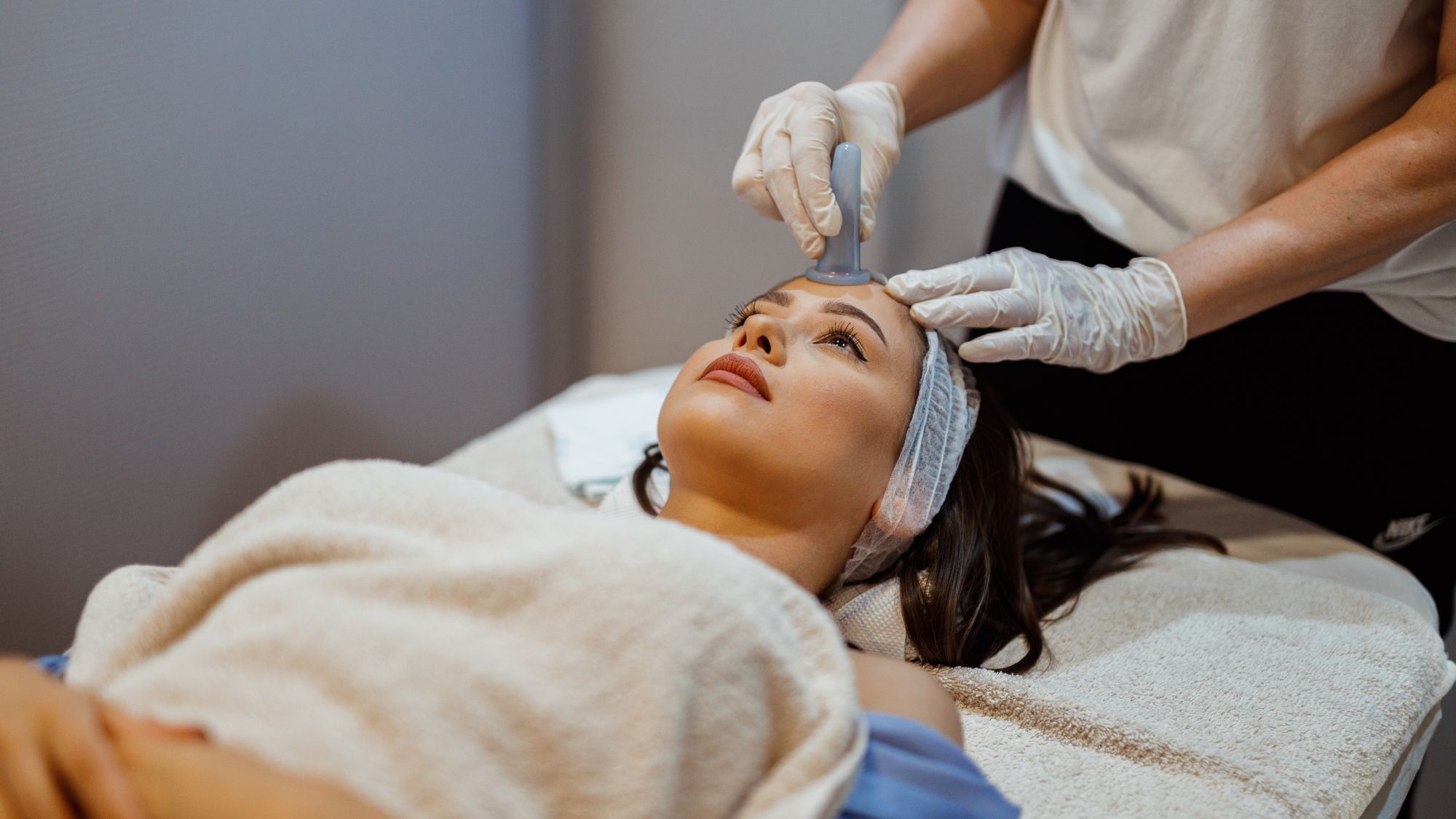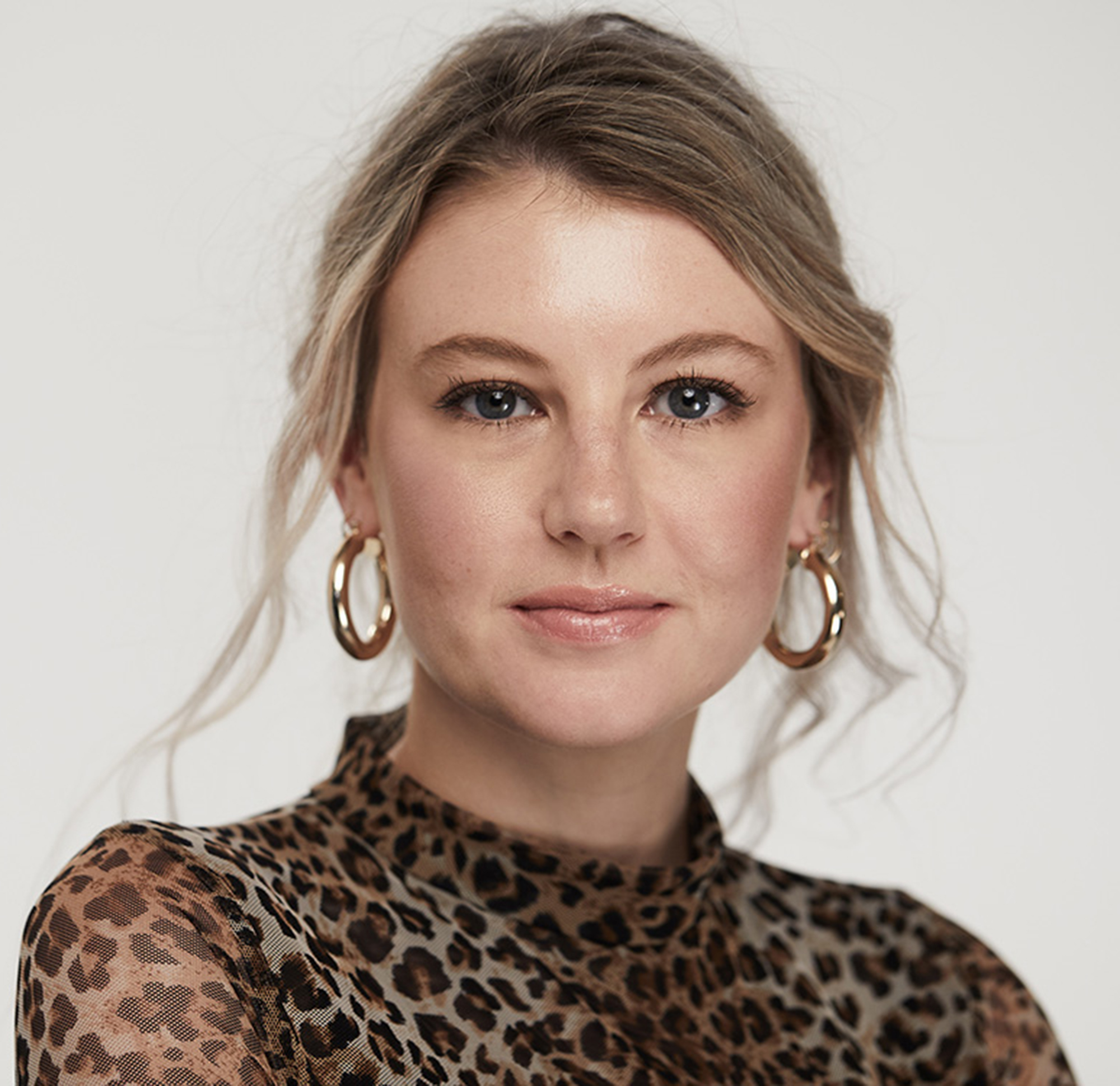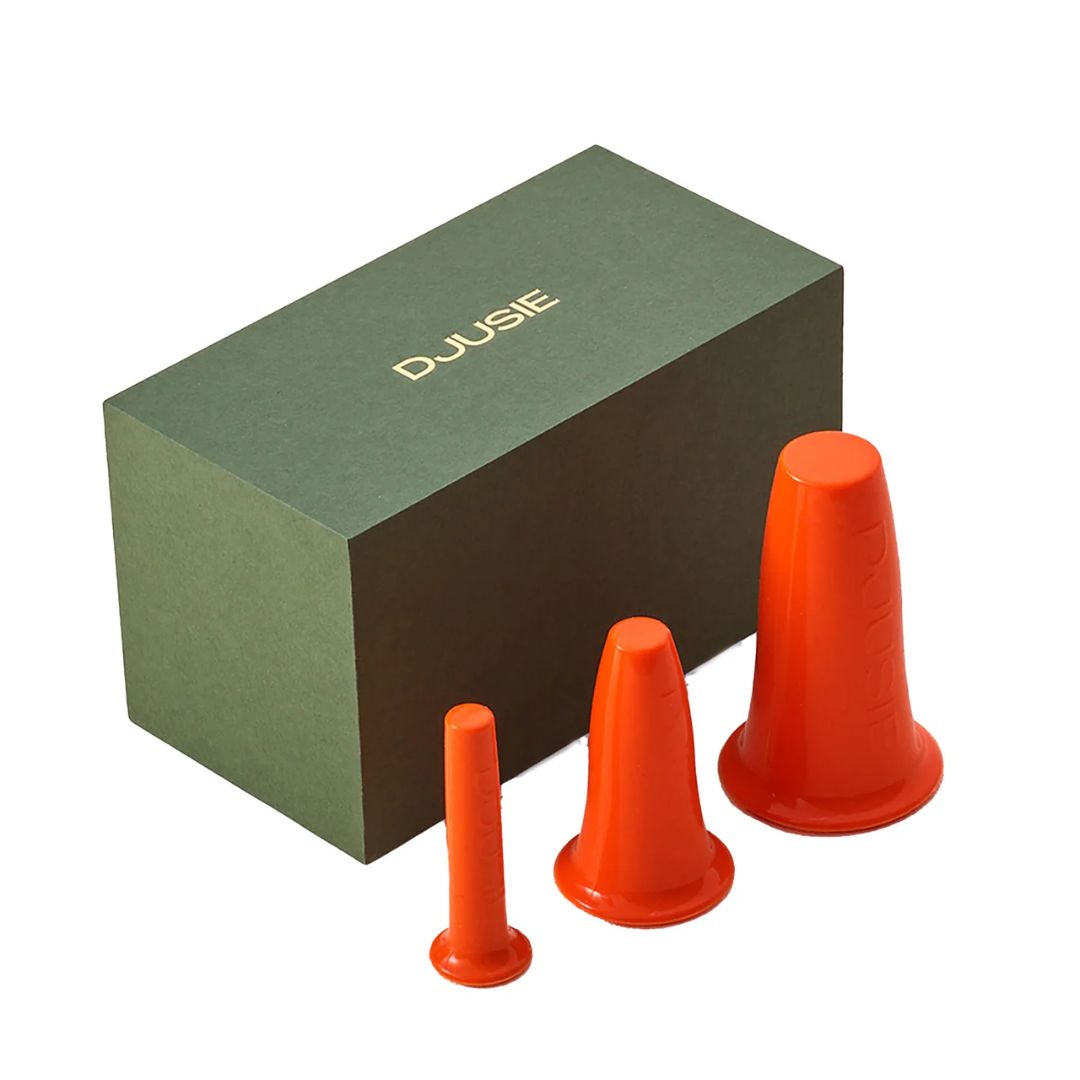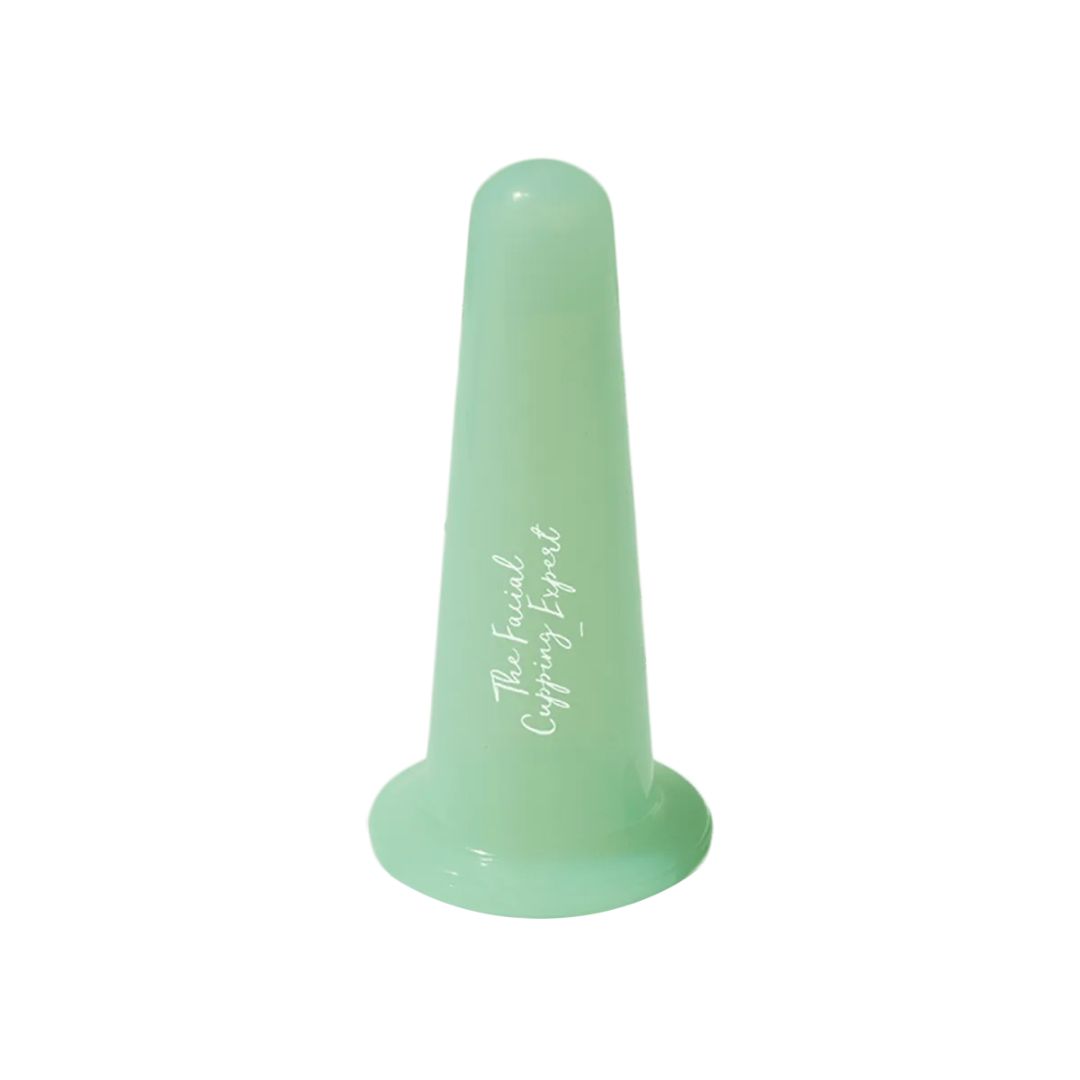Want To Sculpt And Depuff The Face? This Traditional Technique Doesn't Take Long To Master And Can Be Done At Home
10 minutes is all it takes


We've all seen the marks—perfectly round red spots—the tell-tale signs of cupping therapy. During the noughties, the polka dot look was the sign of a healthy lifestyle in Hollywood. As with so many wellness trends, it started with Gwyneth Paltrow, and soon everyone from Jennifer Aniston to Victoria Beckham was seen with little red blotches poking out from behind hemlines. Used to promote healing, help with blood flow and stimulate the muscles, it has been adopted by facialists who saw the benefits of using this traditional therapy to help with lymphatic drainage on the face.
In the same way that the gua sha and ice globes have become firm fixtures in our skincare kits, facial cupping offers another way to sculpt and tone the face.
Marie Claire sat down with Sakina Di Pace, a.k.a. The Facial Cupping Expert, to find out more about the sculpting treatment.
What is facial cupping?
"Cupping is an ancient technique that uses gentle suction to lift the skin and underlying tissues," says Di Pace. It has been used in many cultures for centuries, from ancient Egypt, Greece and the Middle East to traditional Chinese Medicine. "It has been used for over two thousand years to move stagnant Qi, which is energy and blood. "In the past, people used bamboo, clay or even animal horns," she adds. "The tools have changed, but the idea of using suction to encourage the body’s own healing process has been around for a very long time." You are probably familiar with the image of someone's back covered in glass cups, used to help release tight muscles, improve circulation and support recovery. However, the approach on the face is a much gentler affair. "The cups are small and flexible," explains Di Pace. "And the suction is light enough to protect the skin. This gentle lift encourages blood flow, drains excess fluid and brings fresh nutrients to the surface." Facial cupping is used to encourage skin radiance and is said to improve the appearance of creasing and improve tone over time.
What is the difference between facial cupping and body cupping?
"The pressure and the purpose are very different," says Di Face. Where body cupping is used to soothe sore muscles, facial cupping focuses on improving circulation, encouraging lymphatic drainage and helping to give a lifted appearance. Body cupping tends to be deeper and stronger; it's popular with athletes, those with chronic muscle tightness or anyone wanting to support lymphatic drainage. The treatment on the face, however, is much lighter due to the skin being thinner and more delicate. "It is about waking up the skin rather than working out knots," she adds.
Who would benefit from facial cupping therapy?
If you're looking for a treatment to help depuff and give you a more snatched appearance, then you qualify as the ideal client. "It's great for anyone who wants a natural way to keep their skin healthy and glowing. People often use it for puffiness, jaw tension, fine lines, or to bring life back to a dull complexion."
Is there anyone who should avoid facial cupping?
As with a lot of treatments, if you have any flaring inflammation—eczema, rosacea, or active acne lesions—then it's best to wait until these have cleared. Di Face adds that if you have particularly thin or fragile skin, or are taking medication that makes your skin bruise easily, you should steer clear.
Celebrity news, beauty, fashion advice, and fascinating features, delivered straight to your inbox!
For the body it is important to avoid cupping over varicose veins, areas with deep vein thrombosis or recent injuries. Pregnant women should avoid cupping on the lower back and stomach.
How to do facial cupping at home?
A post shared by Sakina Di Pace | Facial Cupping Expert (@thefacialcuppingexpert)
A photo posted by on
Di Face recommends between one to three times a week. Give yourself around 10 minutes and apply a face serum or face oil, something with a bit of slip. As you would with other skincare tools, you want to stimulate the lymphatic system, so work the cups from the middle of the face outwards towards the ears. This is where the lymph nodes are; by stimulating these, they react by draining away toxins and waste.
Keep the cup moving at all times, in rhythmic motions, along the cheeks, the jaw and the forehead. Over time, this "boosts blood flow and stimulates collagen. The extra circulation plumps the skin, softens tension in the jaw and drains fluid under the chin. With regular practice, your jawline looks more toned and defined," explains Di Pace.
And if you're worried about those tell-tale red dots associated with body cupping, don't. The flexible silicone cups allow for such a gentle treatment that the most you can expect is slight redness from the increased blood flow.
You can either incorporate the cups into your existing facial massage routine or use them alone.

Katie Thomas is the Senior Beauty Editor at Marie Claire UK. With over 10 years of experience on women's luxury lifestyle titles, she covers everything from the best beauty looks from the red carpet and stand out trends from the catwalk, to colonic irrigation and to the best mascaras on the market.

